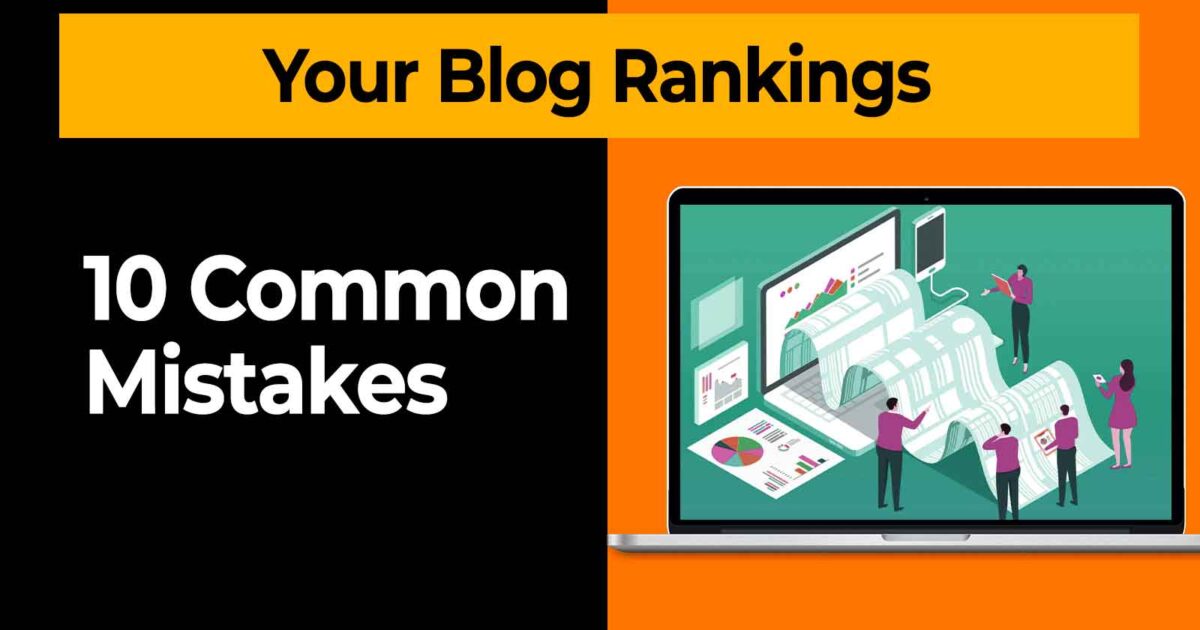
Ranking your blog on Google is crucial for driving traffic, which in turn boosts your website’s visibility and success. However, many bloggers face challenges in achieving high blog rankings, even after investing time and effort into creating quality content.
To help you address these hurdles, we’ve compiled a list of 10 common mistakes that might be holding back your blog’s success, along with actionable tips to overcome them.
Table of Contents
1. Ineffective Keyword Research
Keywords are the backbone of any successful SEO strategy. Poor keyword research can significantly harm your blog rankings. Targeting keywords that are either too competitive or have very low search volume can leave your blog unnoticed.
Solution:
Use tools like Google Keyword Planner, Ahrefs, or SEMrush to identify keywords with moderate competition and high search intent. Focus on long-tail keywords that align with your audience’s specific queries. Avoid keyword stuffing—instead, naturally incorporate keywords into your content.
2. Insufficient Backlinks
Backlinks act as endorsements for your blog. Blogs without strong backlinks often struggle to rank well because search engines view backlinks as a sign of credibility and authority.
Solution:
Build high-quality backlinks by:
- Guest posting on reputable websites.
- Creating shareable, valuable content.
- Reaching out to influencers or niche-specific bloggers to promote your blog.
Tools like Moz and Ahrefs can help analyze and improve your backlink profile.
3. Weak On-Page SEO
On-page SEO elements like title tags, meta descriptions, headers, and content structure play a vital role in improving blog rankings. Neglecting these can confuse search engines about your content’s relevance.
Solution:
- Optimize title tags and meta descriptions by including primary keywords and keeping them concise.
- Use headers (H1, H2, etc.) to create a clear content hierarchy.
- Structure your content logically to enhance readability.
4. Subpar Content Quality
Content quality is a direct ranking factor. Low-quality or shallow content can lead to penalties and lower rankings.
Solution:
Create in-depth, original, and engaging content that provides value to your readers. Focus on:
- Answering your audience’s queries comprehensively.
- Including visuals like images, infographics, and videos to improve engagement.
- Regularly updating old posts to keep them relevant.
Remember, well-researched and actionable content attracts more backlinks and traffic.
5. Not Optimizing for Mobile Users
With mobile devices accounting for a significant portion of web traffic, Google’s mobile-first indexing prioritizes mobile-friendly websites in search rankings.
Solution:
Ensure your blog is responsive and mobile-friendly by:
- Using a mobile-responsive design or theme.
- Testing your site’s mobile usability with Google’s Mobile-Friendly Test.
- Optimizing images and fonts for smaller screens.
6. Slow Page Loading Speed
A slow-loading blog frustrates users and increases bounce rates, negatively impacting your blog rankings. Google considers site speed a ranking factor.
Solution:
- Compress images and use modern formats like WebP.
- Enable browser caching and reduce HTTP requests.
- Upgrade to a reliable hosting provider.
Tools like GTmetrix or Google PageSpeed Insights can help identify and fix speed issues.
7. Ignoring Technical SEO
Technical SEO involves behind-the-scenes optimizations like XML sitemaps, robots.txt, and site architecture. Ignoring these can make it difficult for search engines to crawl and index your blog.
Solution:
- Submit an XML sitemap to Google Search Console.
- Fix broken links and ensure proper URL structures.
- Implement schema markup to enhance search results.
A well-maintained technical SEO setup ensures search engines can easily understand your blog.
8. Overlooking User Experience (UX)
User experience directly affects bounce rates and dwell time, both of which influence blog rankings. Poor navigation, cluttered design, or irrelevant content can drive users away.
Solution:
- Simplify navigation by using clear menus and internal links.
- Maintain consistent branding and a visually appealing design.
- Use analytics tools like Hotjar to gather insights on user behavior and improve UX.
9. Lack of Social Media Promotion
While social signals aren’t direct ranking factors, social media plays a vital role in driving traffic to your blog. Increased traffic can improve your blog’s authority and visibility.
Solution:
Promote your blog posts on platforms like Facebook, Twitter, Instagram, and LinkedIn. Engage with your audience by:
- Sharing valuable insights and updates.
- Using eye-catching graphics and captions.
- Collaborating with influencers to amplify your reach.
10. Inconsistent Posting Schedule
Infrequent updates can make your blog seem inactive, negatively impacting your blog rankings. Search engines prefer fresh, regularly updated content.
Solution:
Create and stick to a consistent posting schedule. Plan your content calendar in advance and ensure a mix of evergreen and trending topics. Consistency builds trust with both search engines and your audience.
Improving your blog rankings takes consistent effort and attention to detail. By addressing these 10 common mistakes, you can enhance your blog’s SEO and visibility, ensuring it reaches its full potential. Remember, blogging success doesn’t happen overnight—focus on creating value for your audience while maintaining SEO best practices, and the results will follow.









